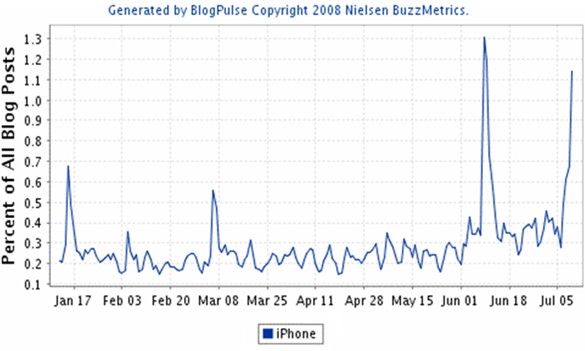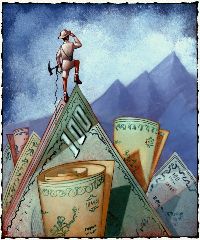Apple’s iPhone 3G launched today in 21 countries, at precisely 8:00am in each local time zone. The logistics of pulling off such an event are absolutely insane to ponder, and preliminary market reports of activation issues are being trumped now by stories of out-of-stock warnings around the world. Hong Kong has a history of literally maniacal mob scenes when a major product is introduced, so Apple took no chances and hired guards in kevlar vests and helmets with shotguns. For a phone.
This is the point where I stick my tongue out at the people who told me Apple was going bankrupt in 1997 and wouldn’t live to see 1998!
Nielsen BuzzMetrics, the Internet “conversation” tracker, released some stats on iPhone 3G’s online presence, which, admittedly, are not that interesting to view.

However, it appears the peak in the online buzz came a few weeks before launch, specifically between June 9 and 13, the time of the Apple Worldwide Developers Conference during which Mr. Jobs detailed the new iPhone features and specs. This is what conveys a true latent demand in the smartphone market, and I wish Apple all the best of success, though it appears I won’t need to:
“iPhone buzz is through the roof. One out of every 100 new blog posts is about the iPhone – more than Barack Obama or John McCain. And while the blogosphere may pay special attention to new technology, this buzz underscores the important role the iPhone is playing in raising awareness of and interest in multimedia phones,” said Nic Covey, Director of Insights, Nielsen Mobile.

 U.S. stock markets have been off to a
U.S. stock markets have been off to a